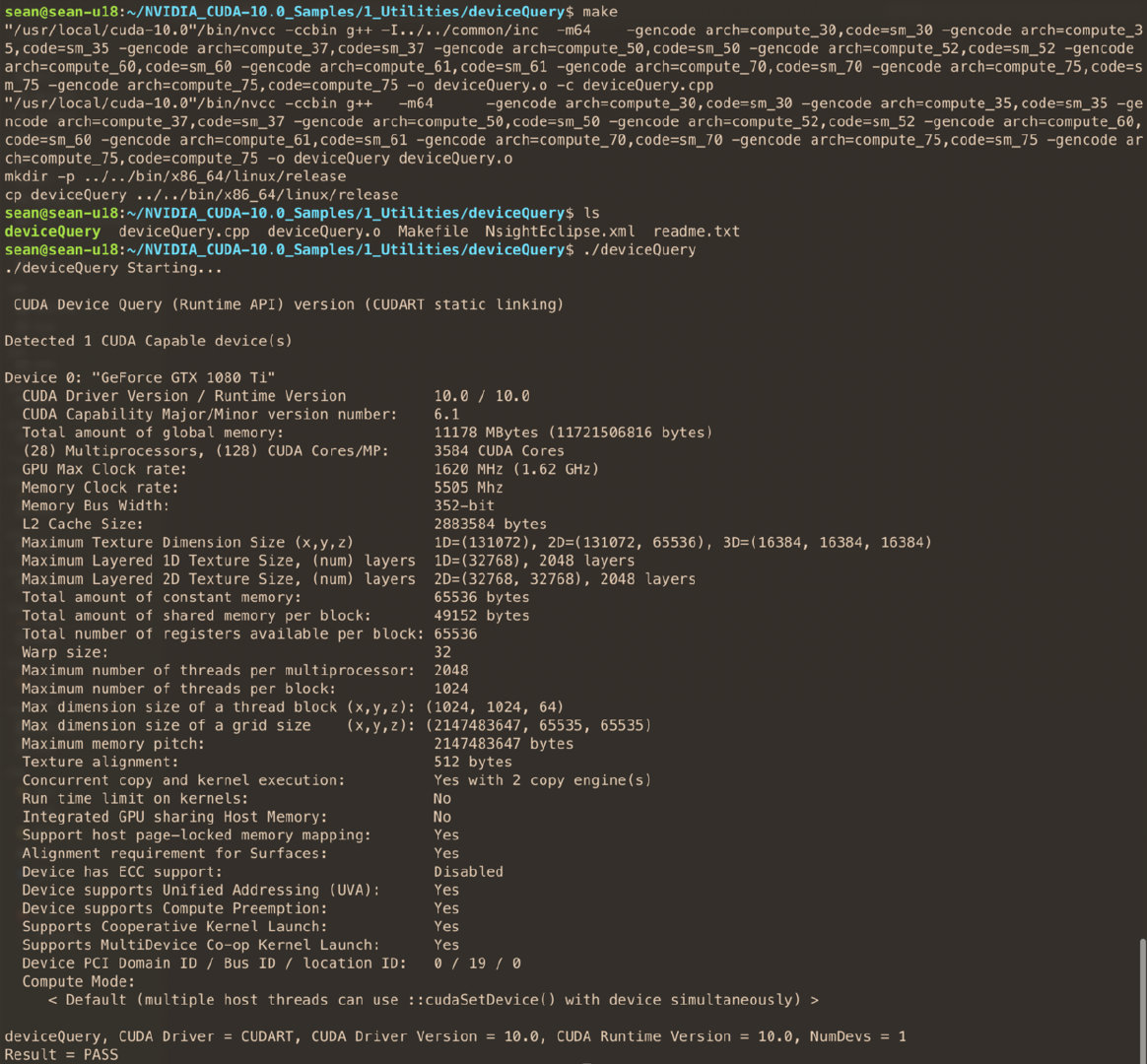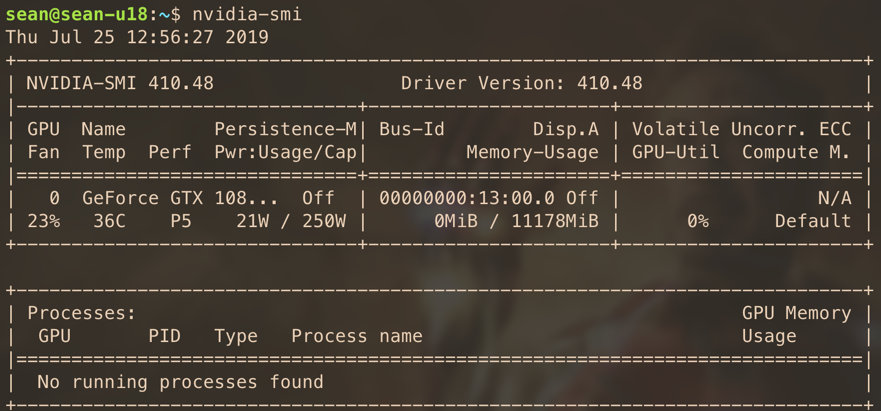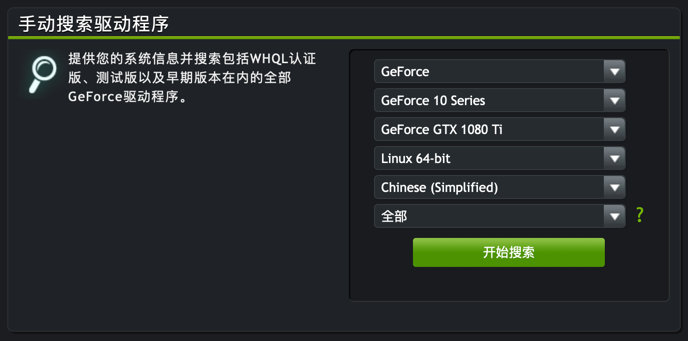目录
Mac和Ubuntu下修改pip源和TensorFlow(CPU)安装
前言
其实主要是CUDA的安装, 别的都很简单.
开发环境一览
- CPU: Intel® Xeon® CPU E5-2696 v3
- GPU: NVIDIA GTX 1080Ti
- OS: Ubuntu 18.04.2 LTS 64位
用指令看下英伟达显卡:
lspci | grep -I nvidia
当你搭建完成环境之后, 可以用官方案例查看硬件信息, 我的GPU信息显示如下图, 这张表的参数在后续的并行算法设计中是很有用的:

显卡驱动安装
这步其实可以跳过, CUDA包里面带了驱动, 但是我还是给出流程. 注意禁用nouveau这一步还是要的.
最好不要用Ubuntu附加驱动里提供的显卡驱动.
可能会遇到一些奇怪的问题, 当然, 锦鲤是不会出问题的(手动滑稽).
这是第一个坑点, 大体有三种展现方式:
- 装完重启进不去系统, 卡住ubuntu加载页面;
- 无限登录;
- 装好了, 进入了系统, 然后输入nvidia-smi指令没有任何反应. 正常情况会弹出一张表, 如下所示:

下载驱动
我的实操:
首先到官网下载显卡驱动, 比方说我是GTX 1080Ti, 操作系统是64位Linux, 我就找对应的版本进行下载.

删掉以往的驱动. 注意, 就算你啥都没装, 这步也是无害的.
sudo apt-get remove --purge nvidia*
安装驱动需要的库:
sudo apt-get update
sudo apt-get install dkms build-essential linux-headers-generic
驱动安装可能需要的库:
sudo dpkg --add-architecture i386
sudo apt update
sudo apt install libc6:i386
安装CUDA需要的库:
sudo apt-get install freeglut3-dev libx11-dev libxmu-dev libxi-dev libgl1-mesa-glx libglu1-mesa libglu1-mesa-dev
禁用nouveau
打开blacklist.conf, 在最后加入禁用nouveau的设置, 这是一个开源驱动, 如





 最低0.47元/天 解锁文章
最低0.47元/天 解锁文章
















 950
950

 被折叠的 条评论
为什么被折叠?
被折叠的 条评论
为什么被折叠?








